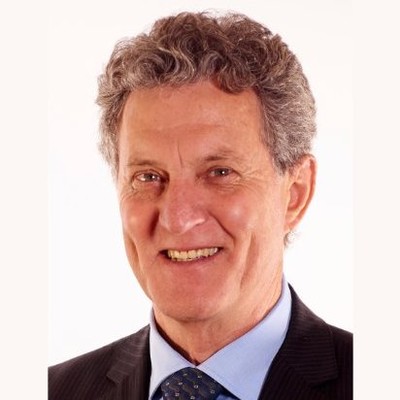leadership
Can Boardroom Leadership Meet the Challenges of the Future?
Published: January 16, 2017
Read Time: 6 minutes

Leadership remains the biggest challenge of all for 2013 and beyond. – World Economic Forum Global Agenda Outlook
There’s never been more commentary on the challenges facing planet earth (and organisations and boardrooms) than we find entering the 21st century. Humanity is challenged to lift its adaptability index massively.
Corporates are more adaptable than governments and are ideally positioned to globally and locally confront the world’s most pressing issues. The boardroom is at the epicenter of corporate action. However, it will require exceptional leadership to successfully convert daunting global challenges into opportunities.
Is boardroom leadership up to the task, nationally and globally?
Despite decades of intensive training and research, leadership is struggling. Harvard’s Robert Kegan is not alone when he suggests contemporary leaders are ‘in over our heads’!1 Executives agree – an IBM survey found that 1,500 CEOs expect that business complexity is going to increase and more than half doubt their ability to manage.2
A University of Melbourne Centre for Workplace Leadership 2014 survey reported a staggering 75% of employees thought Australian workplaces need better managers and leaders.3
Apparently the problem is ‘VUCA‘ ¬– the contemporary Volatile world of Uncertainty, Complexity and Ambiguity. Silicon Valley’s Peter Diamandis, suggests that leadership is challenged because it still thinks locally and linearly while technological change is occurring globally and exponentially. Every business on the planet will be seriously disrupted in the coming decades!4
Boards will need to seriously maximise their leadership processes, protocols practices and behaviours.
Many boardrooms are collegiate teams generating outstanding outcomes. However, many have serious alignment issues and fail to generate value in terms of profit, people or planet. Boardroom disunity is featured in the business press daily. A colleague with 20 years not-for-profit consultancy experience suggested, ’the boardroom was often a bunch of sworn enemies, dominated by the three-letter word Ego!’ Another veteran boardroom consultant confided in me that the board was, ‘a flawed institution … a group of part-timers who made management’s job more difficult’.
I was surprised by the battle-weary perceptions of these experienced consultants. Fortunately, ongoing research is revealing a far more complex scenario, involving action logics. Jane Loevenger and Susanne Cook-Grueter’s research suggests we each have definitive action logics that determine how we see the world and how we will think and act5. Management scientist, Bill Torbert presented an eight-stage model of action logics in a highly commended HBR article entitled, ‘Seven Transformations of Leadership’6. Based on 40 years of research, Torbert describes eight levels of leader mindset development profiling how we interpret our surroundings and react to power and timing. Understanding these developmental stages seriously impact boardroom dynamics and specifically leadership capacity.
In the industrialised economies, Torbert identified that 85% of leaders were positioned in the first four action logics. The fifth action logic (Redefining) is the fastest growing group and roughly corresponds with Jim Collins’ Level 5 leaders (‘from Good to Great’)7. It makes up 10% of the corporate leadership.
Only 5% of leaders hold the most mature action logics – levels 6-8 (Transforming, Alchemical, and Ironic). These leaders are rare but qualified to cope with the disruptive global VUCA environment because they demonstrate mental, emotional, and relational capacities enabling them to lead and negotiate complex systems experiencing disruptive change. They are the most likely of all leaders to reliably succeed in generating organisational transformations while leaders below level 6 (Transformative) will struggle.
Meeting the challenge of delivering meaningful systemic impact and significant outcomes in terms of profit, people and planet requires the compelling mental and emotional capacities of advanced action logics.
Conflict in the boardroom is not a product of sworn enemies, a flawed institution or flawed individuals but rather flawed behaviours arising from a disconnect of action logics. It’s what Brett Thomas calls the ‘Homogeneity Factor’8. Simply stated, it is the false assumption that all executives, chairs and directors have the same psychological capacities and that all colleagues or direct reports resonate with their particular style of leadership.
These insights have serious disruptive implications for the boardroom:
- Director and Chair recruitment and appointment. Currently, in Australia, there are only two professional appointments that do not require specific qualifications – politician and director. And they are two of society’s most critical leadership governance domains! In an increasingly disruptive VUCA future, organisations may well seek to appoint directors (leaders) assessed as having later stage action logic capacity.
- Performance appraisal. Almost everyone in the organisation, from the CEO to the cleaner, participates in performance appraisal. Many boards now undertake annual reviews. Many are embracing more forensic reviews facilitated by external consultants. But this is still not the norm. Consultants and boards are increasingly recognising the importance of profiling people as well as processes, protocols and practices. Validated metrics now exist to consider variables like action logics and may well become a part of assessment best practice.
- Professional Development. Currently almost everyone in an organisation participates in training/professional development coming out of performance appraisal. It’s difficult to get time poor directors to engage in personal and professional development. Parallel with the research into developmental stages (action logics) there has been a burgeoning interest in professional development that assists corporates, like elite athletes, to maximise their capability and to access later stages of development.
Barrett C. Brown, in a compelling White Paper9, explores the disruptive training notion of vertical learning – the value of undertaking targeted and customised developmentally directed professional development enabling directors to acquire later stage competencies to lead and negotiate complex change. Those qualities include10 –
- The ability to understand the conflicting perspectives of a broad range of stakeholders.
- Cognitive capacity to engage complex systems.
- Engaging in emergent organising.
- Demonstrating emotional awareness.
- Continuously connecting with others to sense and make sense of complex realities.
- Adapting as fast as change itself.
- Amplifying wisdom through profound reflection and dialogue to engage in transformational interactions and balance global and local perspectives.
Perhaps the biggest disruptor to enable the future boardroom to govern optimally may well be the recognition that appointing, evaluating and professionally developing directors and chairs will involve a recognition and application of the knowledge emerging out of developmental science discourse.
This article was originally published in the Better Boards Conference Magazine 2015
-
Kegan, R. (1994) In over our heads : the mental demands of modern life. Cambridge, MA: Harvard University Press. ↩︎
-
(IBM, (2010) Capitalizing on Complexity: Insights from the global chief executive officer study. ↩︎
-
“Australian Workplace Leadership Poll February 2014 ” University of Melbourne Media Release. University of Melbourne Media Release. ↩︎
-
BOLD:How to Go Big, Create Wealth and Impact the World (2015) By: Diamandis P. H. & Kotler S. ↩︎
-
Cook-Grueter S. R. (1999) Postautonomous ego development : A study of its nature and Measurement. Dissertation abstracts International, 60 06B (UMI No 993312)and Cook-Grueter S. R. (2000) “Making the case for a developmental perspective. Industrial and Commercial Training”, 36(6/7), 275 ↩︎
-
Rooke, D. & Torbert, W. R. (2005). Seven transformations of leadership. Harvard Business Review, 83. 66. ↩︎
-
) Collins, J. C. (2001). Good to great : why some companies make the leap – and others don’t. New York: Harper Business. ↩︎
-
Thomas, Brett. The Integral Leadership Manifesto ↩︎
-
Brown, B (White Paper) The Future of Leadership for Conscious Capitalism (10) Kegan, R., & Lahey, L.L. (2010) ↩︎
-
“Adult development and organizational leadership”. In Nohria N. & Khurana R. (Eds). “Handbook of leadership theory and practice” (pp769 -787) Boston : Harvard Business School Press. ↩︎
Share this Article
Recommended Reading
Recommended Viewing
Author
-
Chief Executive Officer
Board Accord
- About
-
Robert consults and facilitates reviews to a diverse portfolio of boards, mentors corporate executives and presents to universities and conferences. He has 20 years of global experience delivering programs, consulting and mediating conflict in corporate settings. Robert Gordon has a Masters in Counselling, focussed on organisational psychology with a dissertation on workplace stress. Robert has expertise in EQ, communication, mindfulness, workplace resilience and boardroom best practice. He has completed numerous “train-the-trainer” qualifications and is a graduate of AICD’s International program (UAE). Robert has also been in clinical psychology practice in a maximum-security prison.
Found this article useful or informative?
Join 5,000+ not-for-profit & for-purpose directors receiving the latest insights on governance and leadership.
Receive a free e-book on improving your board decisions when you subscribe.
Unsubscribe anytime. We care about your privacy - read our Privacy Policy .










